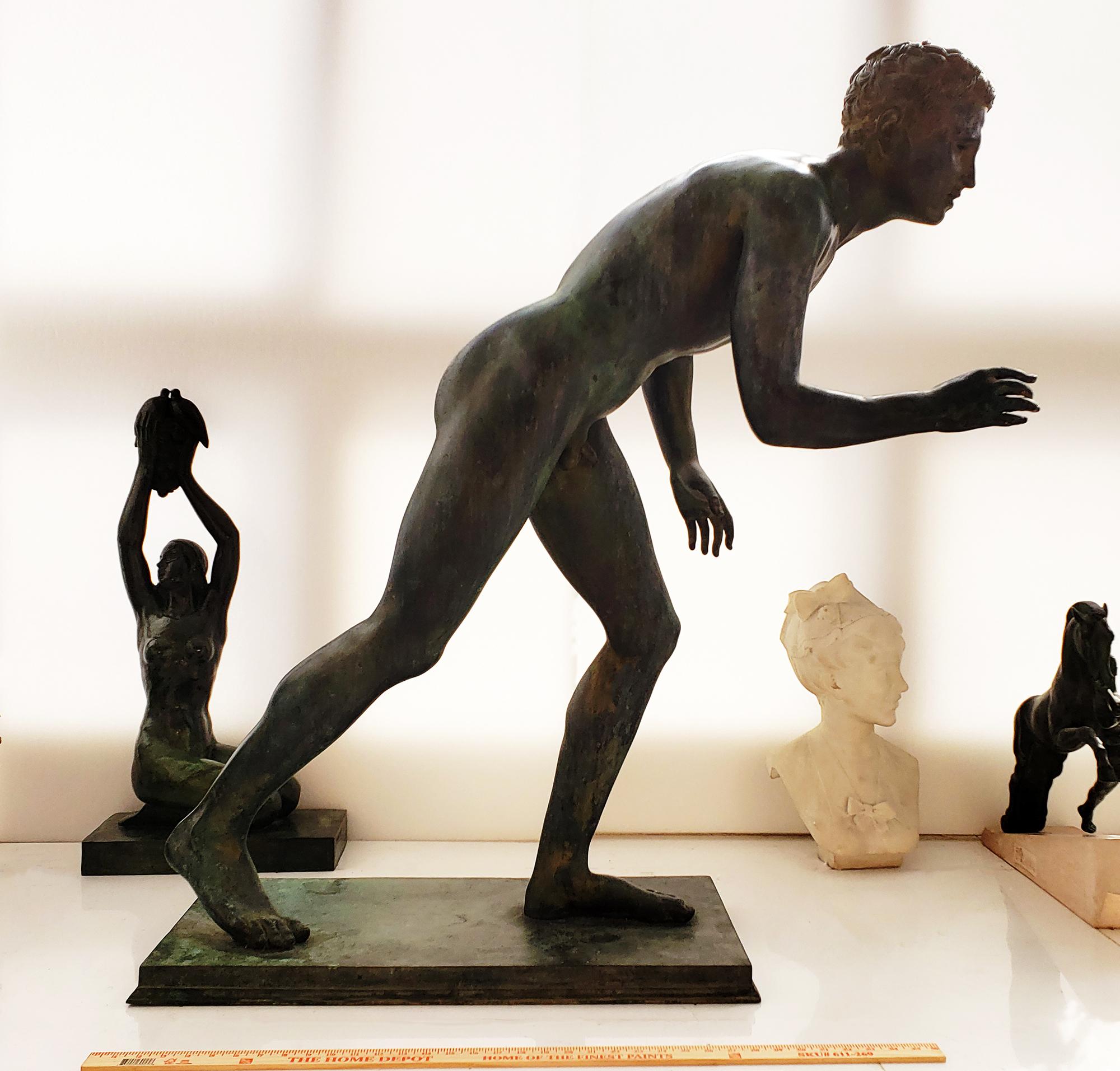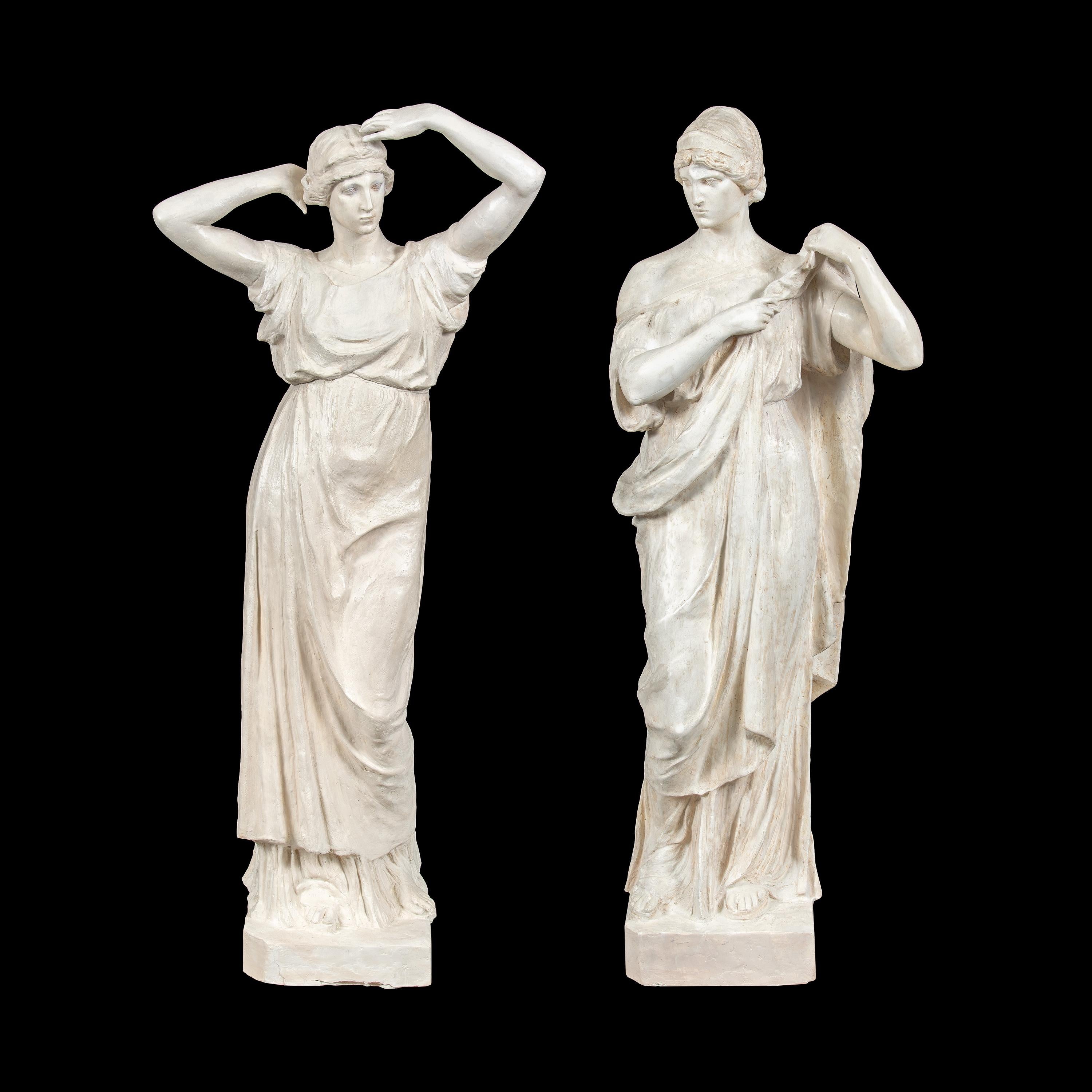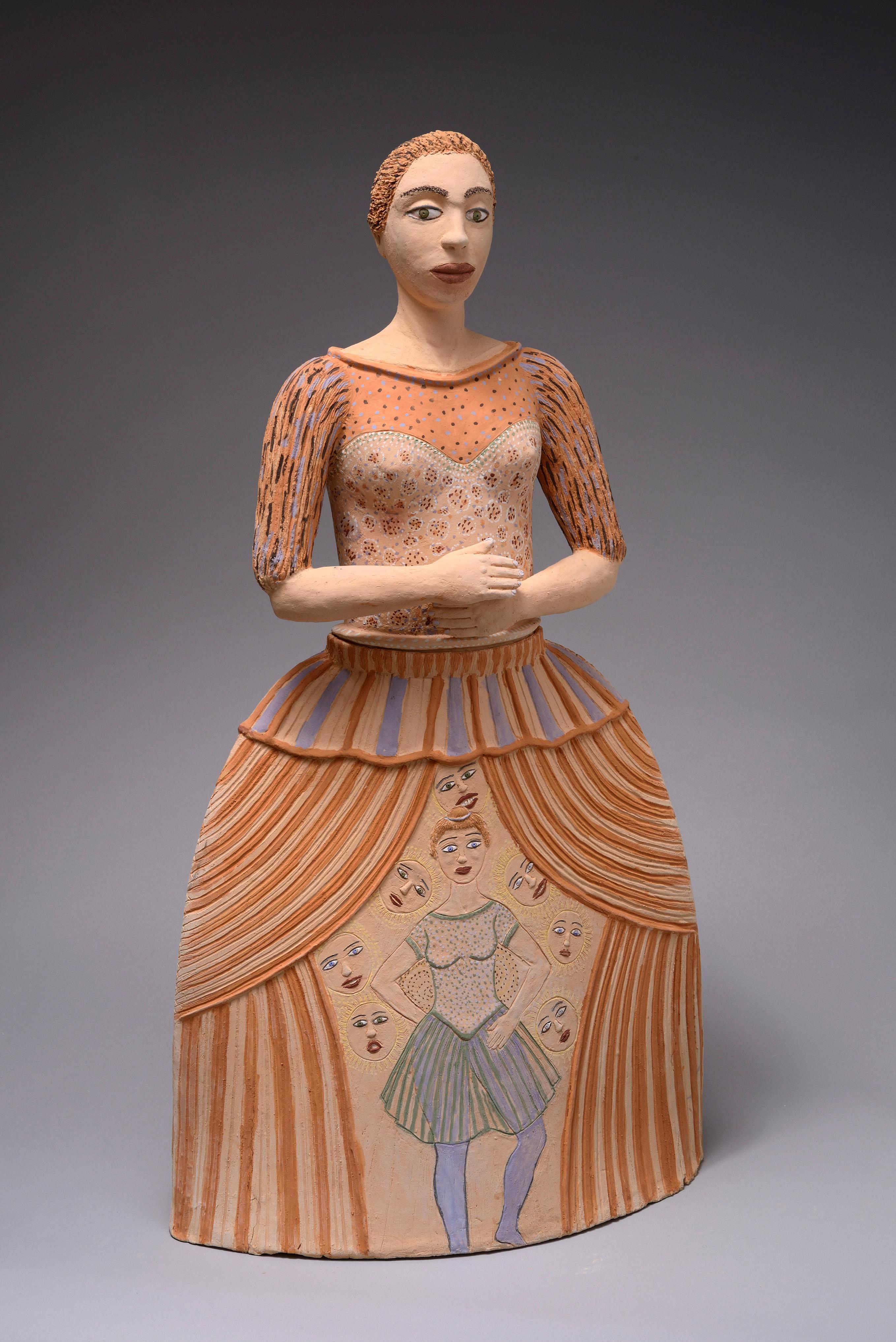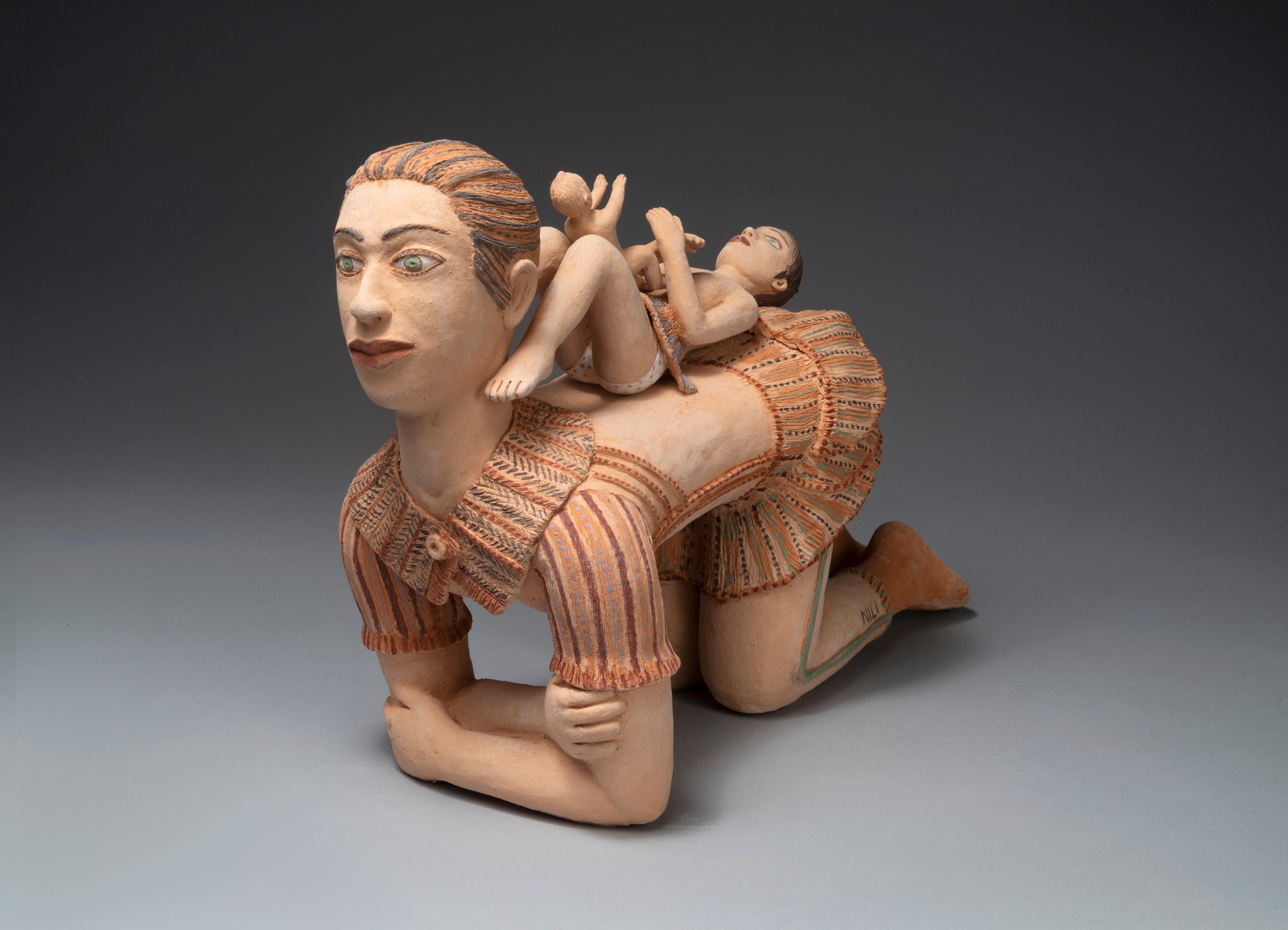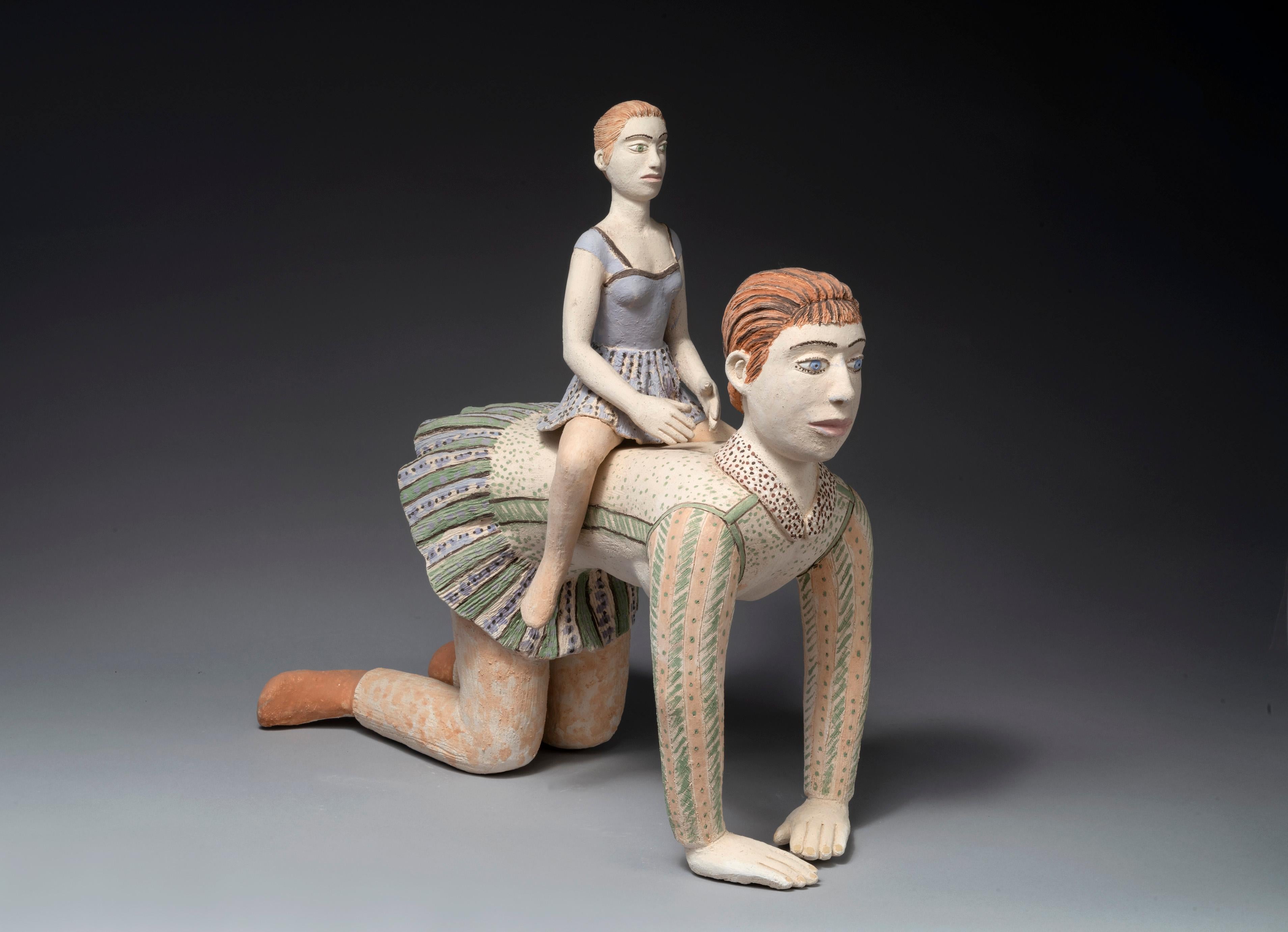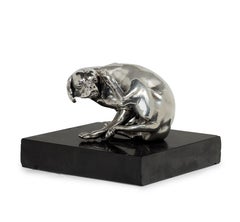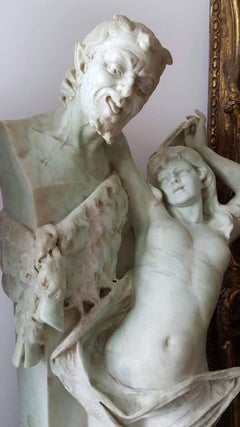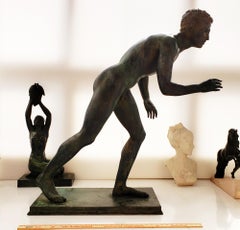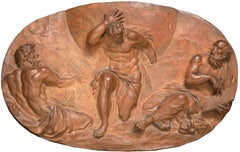
Hercules carrying the World, a sculpture after Annibale Carracci's fresco
View Similar Items
Want more images or videos?
Request additional images or videos from the seller
1 of 7
Hercules carrying the World, a sculpture after Annibale Carracci's fresco Circa 1700
Circa 1700
About the Item
- Creation Year:Circa 1700
- Dimensions:Height: 9.82 in (24.95 cm)Width: 16.13 in (40.98 cm)Depth: 2.75 in (6.99 cm)
- Medium:
- Movement & Style:
- After:Annibale Carracci (1560 - 1609, Italian)
- Period:Late 17th Century
- Condition:Dimensions: 9 13/16 ‘’x 16 1/8’’ (25 x 41 cm) - maximum depth: 2 ¾’’ (7 cm) Gilded wooden frame with antique elements in the Louis XIV style (18 1/8’’ x 24 3/16’’ - 46 x 61.5 cm) Provenance: Private collection, Ile-de-France (France).
- Gallery Location:PARIS, FR
- Reference Number:1stDibs: LU1568211592042
About the Seller
5.0
Vetted Seller
These experienced sellers undergo a comprehensive evaluation by our team of in-house experts.
Established in 2020
1stDibs seller since 2021
8 sales on 1stDibs
Typical response time: 2 hours
More From This SellerView All
- Laocoön and his Sons, an exceptional bronze sculpture by Giacomo ZoffoliLocated in PARIS, FRThis exceptional bronze group (unpublished), executed in Rome in the second half of the 18th century, bears witness to the fascination with the Laocoön since its discovery on January...Category
1770s Renaissance Nude Sculptures
MaterialsBronze
- A set of four hard stone marquetry plaques depicting animals, Italy 18th centuryBy Antonio TempestaLocated in PARIS, FRThese four plaques represent either domestic (a horse, two rams) or exotic animals (a rhinoceros and an elephant). Made on slate slabs cut to shape (a rectangle with concave angles), they are all based on the same narrative scheme: in a frame of Egyptian porphyry, an animal in multicoloured marble is represented advancing on a green marble floor, standing out against a black slate background. These plates were made in Italy, probably in Florence or in Rome, during the 18th century. We think that their primary purpose was to decorate the drawers of a cabinet. Like many other compositions in hard stone, these plaques were inspired by engravings that were a widespread decorative repertoire in the workshops. Three of the plaques presented here were directly inspired by works by Antonio Tempesta (1555 - 1630): the Rhinoceros, the Polish Horse...Category
18th Century Italian School Figurative Sculptures
MaterialsMarble, Slate
- Dog scratching its earLocated in PARIS, FRThis amusing naturalistic sculpture in silver-plated pewter was probably made in the 17th century by Georg Schweigger. Inspired by a model created by another Nuremberg sculptor, Peter Flötner, it bears witness to the persistence during the baroque era of the naturalistic taste that emerged in the Renaissance. Intended as an ornament for some Kunstkammer, or cabinet of curiosities, this sculpture was a great success, as can be seen from the presence of similar works in many European museums. 1. Georg Schweigger Georg Schweigger was a baroque sculptor and medal founder from Nuremberg, known mainly for his small-scale works in stone, carved wood and cast metal. His only large-scale work, the Neptune Fountain, has been in the Petershof Palace, the summer residence of the Tsars near St. Petersburg, since 1797. This monumental sculpture demonstrates his taste for the representation of movement, which we find in this small piece, inspired, as we shall see, by earlier models. 2. The success of a naturalistic theme As is often the case in the history of art, the source of the Dog scratching his ear theme probably comes from an engraving, and more precisely from one made in Strasbourg in 1480 or in Aschaffenburg in 1481 by the Master of the Housebook, an anonymous engraver working in southern Germany at the end of the 15th century. This engraving seems to have been Peter Flötner’s (1490 - 1546) source of inspiration. Peter Flötner was a sculptor and engraver who settled in Nuremberg in 1522. The Louvre Museum also has a gilded lead statuette dated between 1500 and 1515 (on deposit at the Musée de L'Œuvre in Strasbourg), which in turn is thought to have served as a model for other known statuettes. This model was later taken up by the Frenchman Barthélemy Prieur...Category
17th Century Naturalistic Figurative Sculptures
MaterialsMarble, Silver
$5,850 - Italian Landscape, a drawing by Louis-Jean Desprez (1743 - 1804)Located in PARIS, FRThis landscape, masterfully executed in pen and wash by Louis-Jean Desprez around 1779, probably represents a view of the Roman countryside. The treatment of the trees is very similar to that of two engravings which Desprez executed in Rome, The Island of Cythera and The Temple of Love. 1. Louis-Jean Desprez, a cosmopolitan life between Italy and Sweden Born in Auxerre in 1743, Louis-Jean Desprez probably began his apprenticeship with the engraver Charles-Nicolas Cochin...Category
1770s Old Masters Landscape Drawings and Watercolors
MaterialsCarbon Pencil, Ink
- Portrait of Jean-Baptiste Greuze, painted on linen by his daughter Anna GreuzeLocated in PARIS, FRThis replica of the last self-portrait of Jean-Baptiste Greuze painted in 1804, executed by his daughter Anna at her father's side and recently rediscovered, provides us with a poignant image of the great artist, represented with panache despite the disillusions of life. 1. Jean-Baptiste Greuze Jean-Baptiste Greuze was the sixth child of a roofer from Tournus and retained a certain rusticity in his behaviour from his provincial childhood, beyond his taste for describing picturesque scenes of the countryside. He initially started training with a little-known painter from Lyon, Charles Grandon, before his genius was recognised in Paris where he became a full-time student of the Académie (of Painting) in 1755. He exhibited his work for the first time at the Salon during the summer of 1755, before leaving on a trip to Italy in the company of Louis Gougenot, abbot of Chezal-Benoît. Upon his return to Paris, Greuze became a prolific painter, participating widely in the Salons held between 1759 and 1765, to which he sent no less than 63 paintings: numerous genre scenes (The Marriage Contract, The Beloved Mother), but also portraits of his family circle, of courtiers and art lovers, or of his colleagues. The Academy closed the doors of the Salons to him in 1767 for not having produced his reception piece within six months of his reception, as was the tradition. He worked actively on this painting (Emperor Severus rebukes Caracalla, his son, for trying to assassinate him ) until the summer of 1769, tackling historical and mythological subjects for the first time. Once this was completed, he was then fully admitted to the Academy, but as a genre painter, and not as an historical painter, which had been one of the greatest humiliations of his life. Greuze then refused any participation in events organised by the Academy or its successor, the Academy of Fine Arts until 1800. Abandoning history painting, he gave a new twist to genre scenes, bringing them closer to history painting, as in this pair of canvases which constitutes some of his masterpieces: The Paternal Curse: The Ungrateful Son and The Paternal Curse: The Punished Son . Married in 1759 to Anne-Gabrielle Babuti, the daughter of a Parisian bookseller, his marriage was unhappy and his wife probably frequently unfaithful. The institution of divorce enabled him to record their separation in 1793, keeping his two daughters Anna-Geneviève, born in April 1762, and Louise-Gabrielle, born in May 1764, with him. Little is known about his daughter Anna except that she was herself a painter and lived with her father until his death. It is likely that most of the paintings she produced up to that date were attributed to her father, whose technique she shared to a great extent, making it extremely difficult to establish an autonomous corpus of her paintings. Greuze died in his studio at the Louvre on March 21st 1805. The attention paid to the expressivity of his characters and the emotional charge they convey enabled Jean-Baptiste Greuze to enjoy immense popularity with the eighteenth-century public, and they still constitute Greuze's true modernity. As the artist said, "I dipped my brush in my heart". Greuze was also an exceptional draughtsman and a portraitist of immense talent and exceptional longevity who painted both the Dauphin (the son of Louis XV and father to Louis XVI) and the young Napoleon Bonaparte. 2. Greuze's self-portraits Greuze was very much influenced by Dutch paintings during all his life. While the source of his inspiration for genre scenes can be found in Gerard Dou...Category
Early 1800s Old Masters Portrait Paintings
MaterialsLinen, Oil
- Herminia and the Shepherds, a painting by Francesco de Mura (Napoli 1696 - 1782)By Francesco de MuraLocated in PARIS, FRIn this masterly painting, Francesco de Mura presents the meeting of Herminia and the shepherds, a famous episode taken from the seventh canto of Torquato Tasso's Jerusalem Delivered...Category
1760s Old Masters Figurative Paintings
MaterialsCanvas, Oil
You May Also Like
- Vanitas VanitatumLocated in Villafranca Di Verona, ITNumbered and limited to 8 copies Signature: Hand-signed by artist Authenticity: Sold with certificate of Authenticity from the gallery Invoice from the gallery Sculpture: bronze, me...Category
Early 2000s Old Masters Figurative Sculptures
MaterialsMetal, Bronze
- Erotic Mythological Marble Figural, Nude woman, Bacchante and Satyr HermLocated in Miami, FLA sexy and nude curvaceous young Nymph/Bacchante makes amorous advances to a Herm - whose facial expression reflects her erotic touch. The Herm is stylized where his upper torso is c...Category
Mid-19th Century Old Masters Nude Sculptures
MaterialsMarble
$18,850 Sale Price35% Off - Nude Male Runner Bronze patinated Classical After the AntiqueLocated in Miami, FLBeautifully proportioned and handsome nude male bronze with Roman classically refined features after the Antique . It looks best with a key lighting th...Category
20th Century Old Masters Nude Sculptures
MaterialsBronze
- Neoclassical sculpture in Rome- Pair of 19th century Italian scagliola - FiguresLocated in Varmo, ITPair of scagliola sculptures - Roman figures. Italy, 19th century. 51 x 26 x h 118 cm (left) - 41 x 28 x h 118 cm (right). Entirely in scagliola. Condition report: In good general...Category
Early 19th Century Old Masters Figurative Sculptures
MaterialsPlaster
- The sun Nili Pincas Contemporary art sculpture terracotta pastel woman dreamLocated in Paris, FRUnique terracotta sculpture Signed by the artist The contemplative creatures of Nili Pincas, of an extreme refinement, invite silence. This isolation of the sculpted being seizes an...Category
2010s Contemporary Figurative Sculptures
MaterialsTerracotta
- Daphnis Nili Pincas Contemporary art sculpture terracotta pastel woman mythologyLocated in Paris, FRUnique terracotta sculpture Signed by the artist The contemplative creatures of Nili Pincas, of an extreme refinement, invite silence. This isolation of the sculpted being seizes and soothes, at the same time as it questions. Are we facing the face of anguish or introspection? The white or purple flesh, with a slightly grainy matte appearance, reveals the infinite sensuality of the artist’s touch...Category
2010s Contemporary Figurative Sculptures
MaterialsTerracotta
Recently Viewed
View AllMore Ways To Browse
Wall Hanging Figural Sculpture
Ceiling Sculpture Hanging
Armillary Sphere Used
Hercules Lion
Wooden Lion Sculpture
Flemish Wall Mirror
Apple Garden Sculpture
Antique Armillary
Armillary Antique
Wooden Exercise
Engraving Louis Xiv
Sky Dragon
Small Reverse Painted Mirror
Lion Wall Hanging
Annibale Carracci
Pierre Martin
Dragon Head 4 Heads
Old Antique Compass

